Enoturismo en Chablis
Enoturismo en Chablis: información sobre el destino, cómo moverse en Chablis, Las mejores experiencias enológicas, Itinerarios y visitas, consejos y secretos.
Famoso por sus vinos Chardonnay, crujientes y ricos en minerales, Chablis es un pintoresco pueblo del norte de Borgoña que desprende encanto más allá de sus viñedos. El terruño único, con sus suelos ricos en caliza, confiere un carácter pedernalino distintivo a sus vinos, haciendo de Chablis sinónimo de pureza y elegancia en la elaboración del vino.
Más allá del vino, Chablis ofrece una escapada serena con sus encantadoras casas de piedra, el tranquilo río Serein y pintorescas rutas de senderismo. Los visitantes pueden explorar iglesias históricas y animados mercados locales, y deleitarse con la deliciosa cocina regional, convirtiéndolo en un destino donde el vino, la historia y la naturaleza convergen armoniosamente.
En esta guía, nos adentraremos en el patrimonio de Chablis, su peculiar terruño y los excepcionales vinos que la han convertido en símbolo de refinamiento y calidad. Si ya conoces la región vinícola de Chablis, no dudes en saltarte esta guía y empezar a buscar
Experiencias de vino en Chablis disponibles en winedering.com.
El destino: Chablis
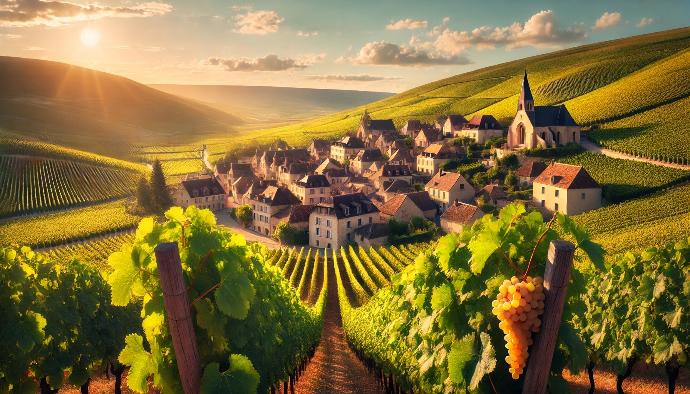
Bienvenido a Chablis, un pueblo donde convergen la elegancia atemporal, la excelencia vinícola y la belleza natural.
Situado en la parte más septentrional de Borgoña, Chablis es famoso en todo el mundo por sus excepcionales vinos de Chardonnay y sus pintorescos viñedos. La historia del pueblo se remonta a la época romana, y ha sido un importante centro vinícola desde la Edad Media, con los monjes locales desempeñando un papel clave en la formación de la cultura del vino aquí. Hoy en día, Chablis sigue cautivando a los visitantes con su terruño único y su vibrante comunidad.
Al pasear por el pueblo, te cautivarán sus pintorescas calles bordeadas de casas de piedra, sus encantadoras bodegas y sus monumentos históricos, como la iglesia de Saint-Martin, que data del siglo XIII. El tranquilo río de la ciudad, el Serein, fluye suavemente a través del paisaje, añadiendo serenidad al ambiente y ofreciendo vistas pintorescas.
Chablis es famoso por sus viñedos, plantados en antiguos suelos calizos y arcillosos, conocidos como margas kimmeridgianas. Esta peculiar composición del suelo, unida a un clima fresco, confiere a los vinos de Chablis su característica mineralidad, frescura y elegancia.
Más allá del vino, Chablis ofrece toda una gama de atracciones culturales y naturales. Descubra la grandeza de la Abadía de Pontigny, una de las abadías cistercienses más antiguas del mundo, o pasee por el pueblo medieval de Noyers-sur-Serein, conocido por sus casas con entramado de madera y sus calles empedradas. El Musée Vinea Passion es perfecto para aprender más sobre la historia vitivinícola local, mientras que un tranquilo paseo a lo largo del río Serein revela tranquilas vistas de la campiña.
No te pierdas la Tour Mirau d'Aval, una antigua torre fortificada que ofrece vistas panorámicas, ni explores la cercana ciudad de Auxerre, con su impresionante catedral gótica y su vibrante ambiente. Chablis te invita a descubrir su rico patrimonio, saborear sus incomparables vinos y abrazar la serenidad de este encantador destino borgoñón.
Cómo llegar a Chablis
Cuando planifiques un viaje a Chablis, ten en cuenta estas 3 rutas de viaje para aprovechar al máximo tu viaje:
Ruta 1: París y Chablis
Empieza en París, explorando sus lugares emblemáticos y sus tesoros culturales. A continuación, viaje a Chablis en tren o en coche para conocer sus famosos viñedos, su encantador pueblo y sus característicos vinos Chardonnay.
Route 2: Lyon, Dijon, and Chablis
Begin in Lyon, savoring its gourmet cuisine, then head to Dijon for its historic sites and wine culture. Finally, continue to Chablis to immerse yourself in the serene landscapes and discover the unique character of its wines.
Route 3:
Champagne to Chablis
Flights
The nearest international airports are Paris Charles de Gaulle (CDG) and Paris Orly (ORY). From these airports, you can either rent a car and drive to Chablis (approximately 2 hours) or take public transportation to the city center of Paris.
Alternatively, you can fly into Lyon-Saint Exupéry Airport (LYS), which is about 2.5 hours away by car. This option is ideal if you want to explore other parts of Burgundy along the way.
Trains
From Paris Gare de Lyon, take a direct train to Auxerre or Laroche-Migennes station, both of which are about 20-25 minutes away from Chablis by taxi or bus. The train journey takes around 1.5-2 hours. Another option is to travel from Paris Bercy station to Tonnerre, followed by a 15-minute drive to Chablis. If you're coming from Lyon, take a high-speed TGV train to Dijon, then transfer to a regional train to Auxerre or Laroche-Migennes.
Car / Taxis
Renting a car offers the flexibility to explore the scenic countryside of Burgundy. From Paris, take the A6 Autoroute (also known as the "Route des Vins"), heading south toward Auxerre and following signs to Chablis. The journey is about 2 hours. From Lyon, take the A6 heading north towards Dijon, then follow the A38 and local roads to Chablis.
Buses
Local buses connect Auxerre, Tonnerre, and other nearby towns to Chablis, making it an affordable option for reaching the village.
Wine & Food in Chablis
The Kingdom of Chardonnay
Chablis, located in the northernmost part of Burgundy, is one of the world’s most esteemed wine regions, renowned for its pure and expressive Chardonnay wines. The appellation spans approximately 4,700 hectares of vineyards and is characterized by its cool climate and unique soil composition, which impart distinctive qualities to the wines produced here. Chablis’ commitment to showcasing terroir results in wines that are celebrated for their elegance, minerality, and vibrant acidity.
The defining feature of Chablis is its soil, predominantly composed of Kimmeridgian limestone and clay, rich in fossilized marine shells. This geological makeup, combined with a continental climate, lends Chablis wines their signature steely minerality, subtle flintiness, and crisp structure. The region's cool temperatures contribute to the high acidity and freshness that are hallmarks of Chablis, resulting in wines that are often leaner and more focused compared to the fuller-bodied Chardonnays found in other regions.
Chablis wines are classified into four main appellations: Petit Chablis, Chablis, Chablis Premier Cru, and Chablis Grand Cru. Each classification reflects the quality, location, and specific characteristics of the vineyard sites:
- Petit Chablis: The most approachable and lightest style, typically offering crisp and refreshing wines with lively citrus and green apple notes.
- Chablis: Representing the largest production volume, Chablis wines are known for their precision, minerality, and balance, with more complexity than Petit Chablis.
- Chablis Premier Cru: These wines are produced from specific vineyard sites with superior sun exposure and soils, resulting in wines that display greater concentration, complexity, and aging potential.
- Chablis Grand Cru: Situated on the right bank of the Serein River, the Grand Cru vineyards cover just 100 hectares and consist of 7 distinct climats (vineyard plots), such as Les Clos, Vaudésir, and Valmur among others. Grand Cru Chablis wines are the pinnacle of quality, offering remarkable depth, elegance, and aging potential.
The winemaking style in Chablis varies depending on the producer and classification. While some producers prefer to ferment and age their wines in stainless steel tanks to preserve the purity and freshness of the fruit, others utilize neutral oak barrels to add complexity and subtle richness. However, Chablis wines generally avoid heavy oak influence, which allows the terroir and varietal character to shine through.
Beyond its unique terroir, Chablis is also known for its strict production regulations aimed at preserving quality and authenticity. The Chablis AOC (Appellation d’Origine Contrôlée) was established in 1938, and its standards ensure that the wines maintain their hallmark freshness, minerality, and purity. This dedication to quality has made Chablis a benchmark for Chardonnay, with its wines highly sought after by connoisseurs and wine enthusiasts worldwide.
In recent years, producers have also begun to experiment with organic and biodynamic practices, further emphasizing sustainability and respect for the land. These efforts, combined with Chablis’ unique terroir and winemaking traditions, ensure that the region continues to produce exceptional wines that reflect its timeless elegance and finesse.
💡 Did you know that each vineyard in the Chablis wine region has a unique identity, name, and character that's been recognized for centuries?
These plots, known as
Climats,
are at the heart of what makes Chablis wines so distinctive. The term
Climat
comes from the Greek word
klima
and the Latin
clima,
meaning "slope," reflecting the natural geography and microclimates that shape the wines of this renowned region. The first recorded use of the word
in Chablis dates all the way back to 1537, when it was used to describe the vineyards owned by the Abbey of Pontigny.
In 1935, the term was officially recognized as a defining characteristic of the Burgundian appellations. But it wasn't until July 4, 2015, that these unique vineyard sites received global recognition when the Climats of the Bourgogne winegrowing region, including Chablis, were inscribed on the UNESCO World Heritage List.
Traditional dishes of Chablis
The traditional cuisine of Chablis is deeply rooted in the Burgundy region’s culinary heritage and pairs exceptionally well with the region’s iconic wines. Some of the traditional dishes you can find in Chablis include:
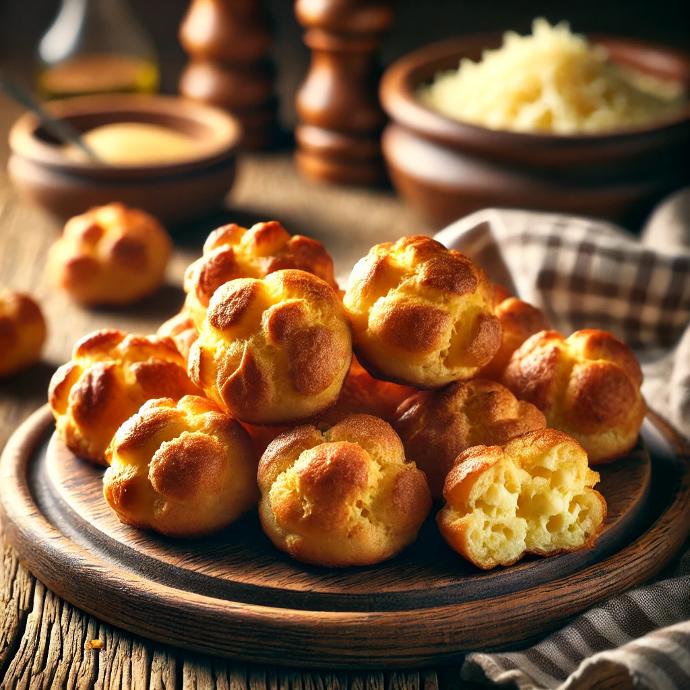
Gougères
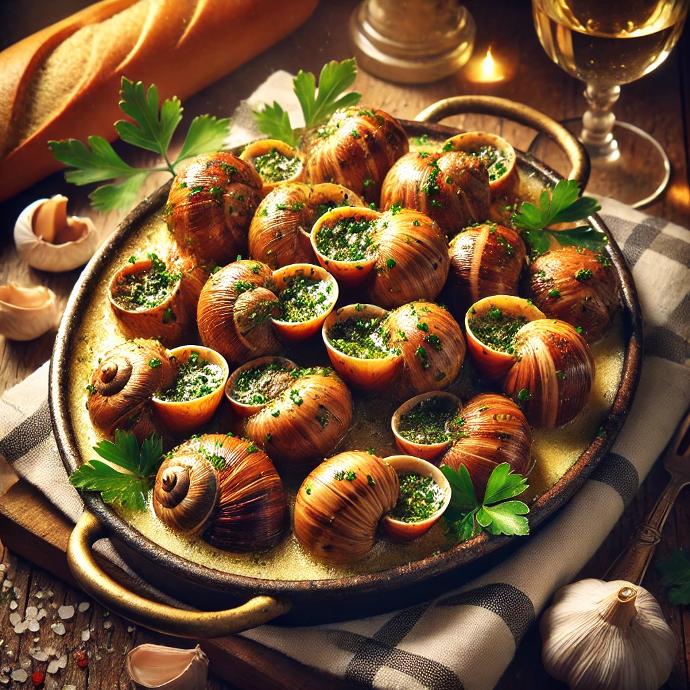
Escargots de Bourgogne
Burgundy-style snails cooked in a rich garlic, parsley, and butter sauce. The delicacy’s earthy flavors and buttery texture complement the minerality and freshness of Chablis wines.
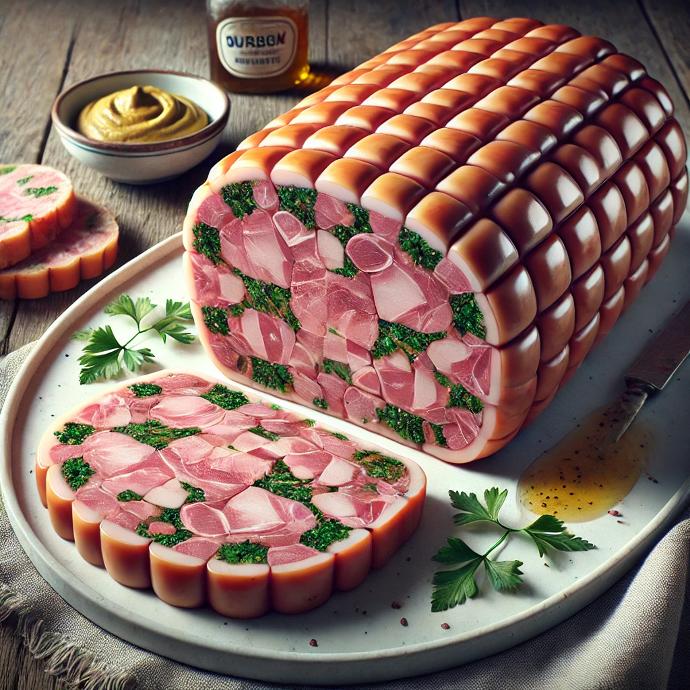
Jambon Persillé
A classic Burgundy dish made with ham hock and parsley, set in a savory aspic jelly. It is usually served as an appetizer and pairs well with the vibrant acidity of Chablis, which cuts through the dish’s richness.
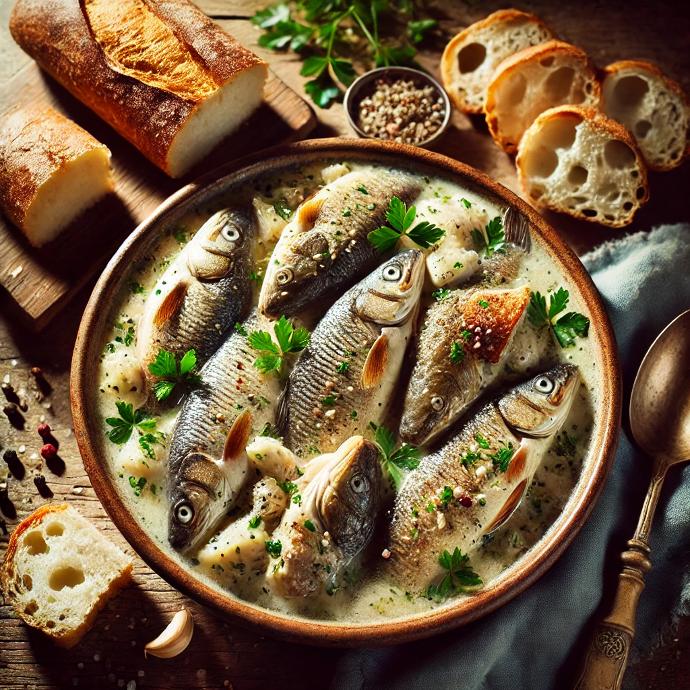
Pôchouse
A traditional fish stew made with a variety of freshwater fish such as pike, perch, and eel, simmered in a white wine sauce (often Chablis itself), onions, and herbs. This dish highlights the compatibility of Chablis with seafood.
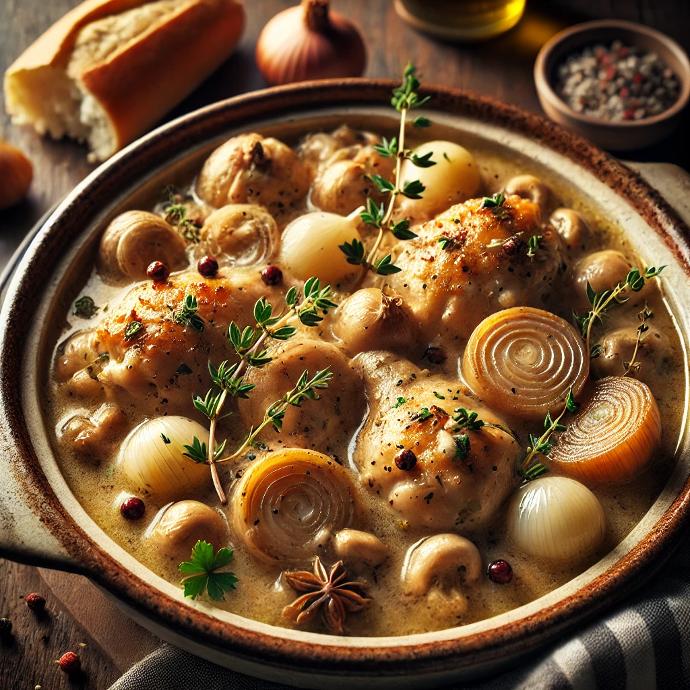
Coq au Vin Blanc
A variation of the classic coq au vin, made with white wine instead of red, often using Chablis. The dish is simmered with chicken, mushrooms, onions, and bacon, resulting in a flavorful and creamy sauce.
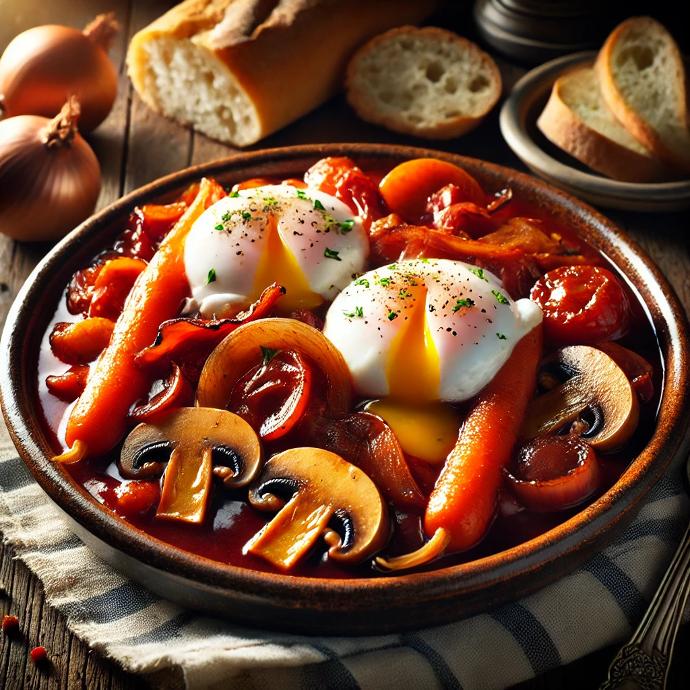
Oeufs en Meurette
A regional specialty featuring poached eggs served in a red wine sauce with onions, mushrooms, and bacon. While traditionally made with red wine, a white wine version using Chablis is also common.
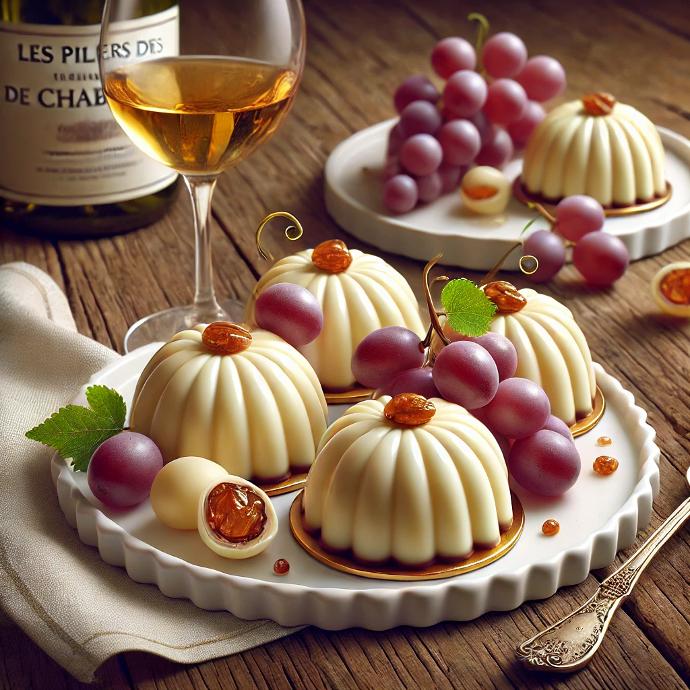
Les Piliers de Chablis
This is a refined local dessert made from white chocolate shells filled with a rich praliné ganache and grapes macerated in Marc de Bourgogne. This unique treat is known for its delicate combination of flavors, where the sweetness of white chocolate and praliné is balanced by the fruity and slightly alcoholic notes of the macerated grapes.

Le Chablisien
This exquisite cake is made up of multiple layers. It starts with a delicate sponge cake base, topped with a layer of hazelnut meringue, followed by a layer of praliné chocolate cream, sprinkled with raisins that have been macerated in ratafia – a local fortified wine. Another layer of sponge is added on top to complete the cake, creating a harmonious blend of textures and flavors.

Le Biscuit Duché
Le Biscuit Duché, crafted by the inventive Mr. Duché in the 1820s, is a traditional French delicacy that stands out for its dry, slightly firm texture and subtle sweetness. The biscuit’s delicate flavors beautifully enhance the vibrant minerality of Chablis, creating a harmonious pairing that elevates any tasting experience
Chablis & Soumaintrain: A Harmonious Pairing!
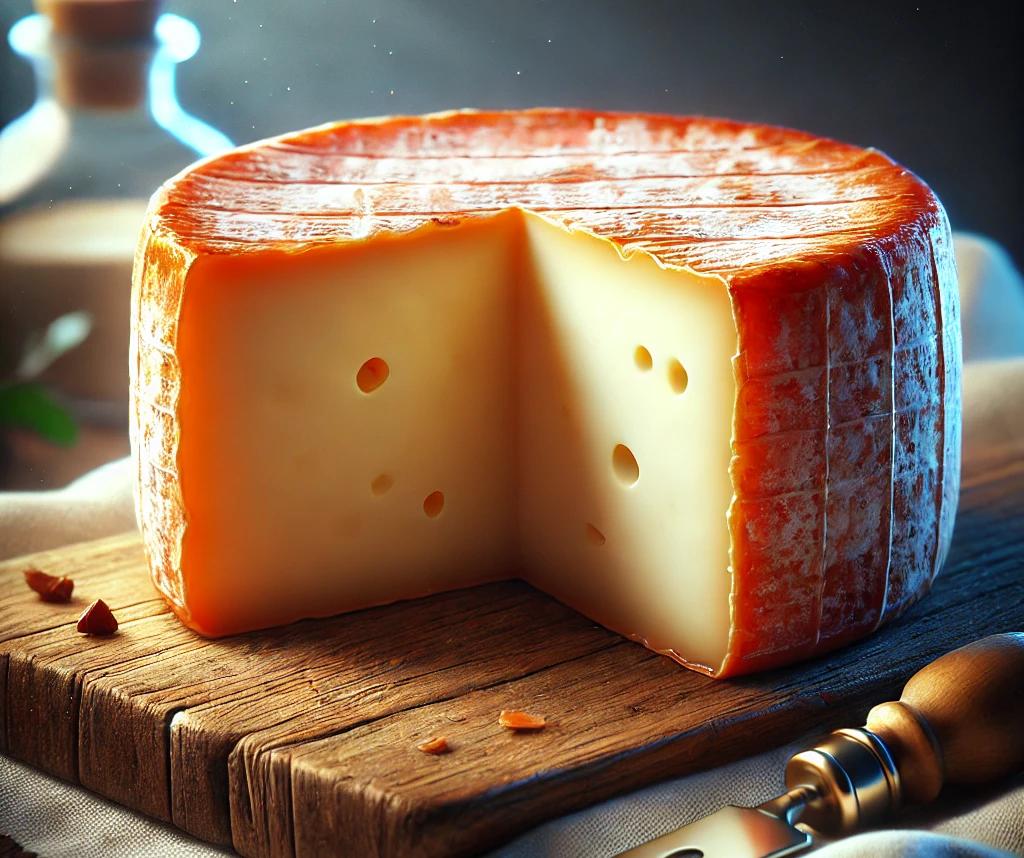
Chablis wines and Soumaintrain cheese are connected by both their proximity and shared history. The two villages are just 30 kilometers apart, and the terroir that shapes these products is intertwined with the region’s unique geological past. The Cistercian monks of the Abbey of Pontigny played a crucial role in cultivating the vines and refining cheesemaking techniques. This shared heritage contributes to the complementary nature of Chablis and Soumaintrain.
Soumaintrain, a soft cow’s milk cheese with a washed rind, has a creamy, unctuous texture and a slight acidity that develops into rich and complex flavors. Chablis, known for its minerality and fresh acidity, offers the perfect counterpoint.
Petit Chablis or Chablis is ideal for pairing with young Soumaintrain, while aged cheeses with stronger flavors are best enjoyed with Chablis Premier Cru or Chablis Grand Cru, which bring out the nuances of both wine and cheese without overpowering each other.
Top 2 Wine Experiences
Here are our 2 top recommendations for wine experiences in Chablis, carefully selected by Winedering, the world's most popular wine and food experiences marketplace. These experiences, booked by thousands of customers, are the ones we highly recommend for creating unforgettable moments.
Visit & Chablis Wine Tasting Experience at Domaine Clotilde Davenne
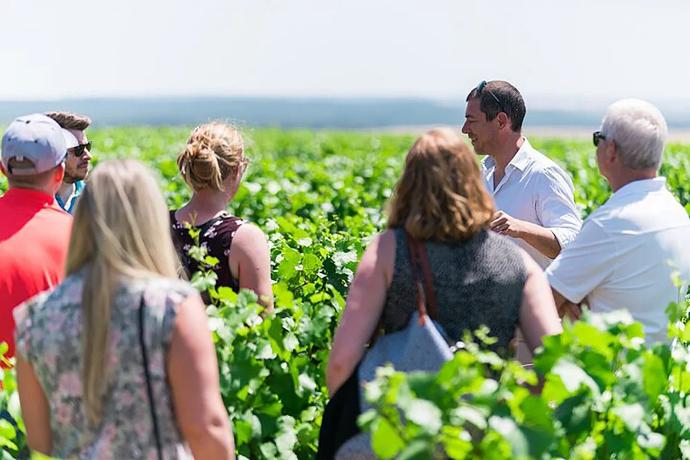
Discover the essence of Chablis at Domaine Clotilde Davenne with a guided tour of the vineyards and cellar, followed by a tasting of 6 wines from their Chablis and Auxerrois collections. The experience, lasting 1 to 1.5 hours, offers a memorable journey into winemaking set against the beautiful Chablis landscape. Ideal for wine enthusiasts looking to explore the region’s terroir and history.
Experience type: Winery visit & tasting
Ideal for: friends, solo travelers, groups (max 12 people)
Grands Crus Vineyard Ride and Chablis Wine Tasting at Domaine Clotilde Davenne

Explore Chablis like never before at Domaine Clotilde Davenne! Hop on an electric Mehari for an eco-friendly ride through the famed Grands Crus vineyards, enjoying panoramic views of the lush landscape. This unique 2-hour experience departs from the heart of Chablis and is followed by a guided tasting of 6 exquisite wines at the winery's shop. Immerse yourself in the terroir and tradition of Chablis while learning about the estate’s winemaking techniques and history.
Experience type: Vineyard visit and tasting
Ideal for: couples, friends (max 3 people)
Enjoy Wine Experiences in Chablis
With detailed itineraries and insider tips, your adventure through the Chablis wine region will be both seamless and enriching.
Remember to take your time, enjoy the stunning views, and soak in the warm hospitality of the local winemakers and residents. Here's to many memorable wine experiences in Chablis, that you can easily book online on Winedering.com, the best online wine tourism marketplace worldwide.
Bon voyage and cheers to an unforgettable Chablis adventure!